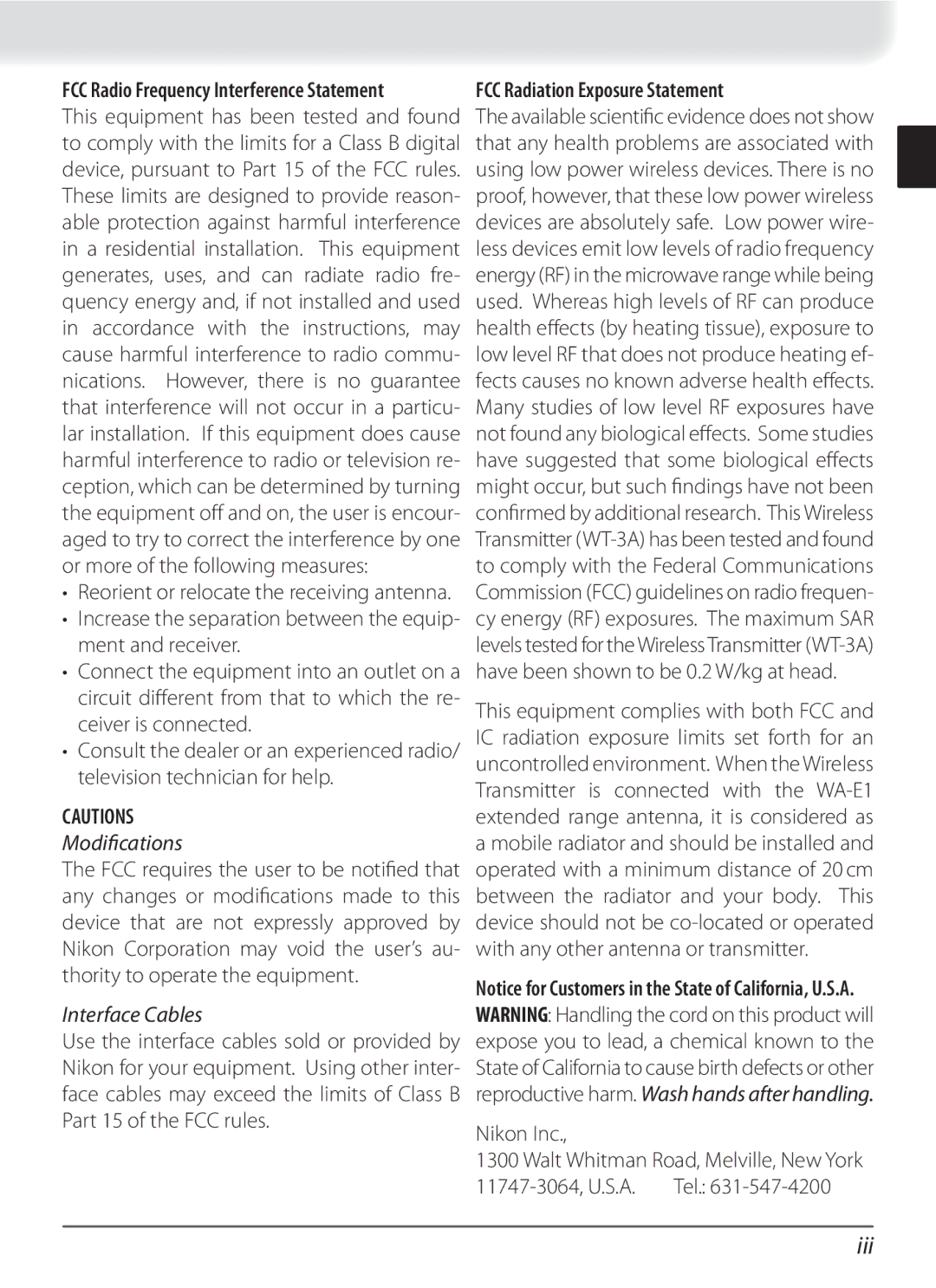
FCC Radio Frequency Interference Statement
This equipment has been tested and found to comply with the limits for a Class B digital device, pursuant to Part 15 of the FCC rules. These limits are designed to provide reason- able protection against harmful interference in a residential installation. This equipment generates, uses, and can radiate radio fre- quency energy and, if not installed and used in accordance with the instructions, may cause harmful interference to radio commu- nications. However, there is no guarantee that interference will not occur in a particu- lar installation. If this equipment does cause harmful interference to radio or television re- ception, which can be determined by turning the equipment off and on, the user is encour- aged to try to correct the interference by one or more of the following measures:
•Reorient or relocate the receiving antenna.
•Increase the separation between the equip- ment and receiver.
•Connect the equipment into an outlet on a circuit different from that to which the re- ceiver is connected.
•Consult the dealer or an experienced radio/ television technician for help.
CAUTIONS
Modifications
The FCC requires the user to be notifi ed that any changes or modifi cations made to this device that are not expressly approved by Nikon Corporation may void the user’s au- thority to operate the equipment.
Interface Cables
Use the interface cables sold or provided by Nikon for your equipment. Using other inter- face cables may exceed the limits of Class B Part 15 of the FCC rules.
FCC Radiation Exposure Statement
The available scientific evidence does not show that any health problems are associated with using low power wireless devices. There is no proof, however, that these low power wireless devices are absolutely safe. Low power wire- less devices emit low levels of radio frequency energy (RF) in the microwave range while being used. Whereas high levels of RF can produce health effects (by heating tissue), exposure to low level RF that does not produce heating ef- fects causes no known adverse health effects. Many studies of low level RF exposures have not found any biological effects. Some studies have suggested that some biological effects might occur, but such fi ndings have not been confirmed by additional research. This Wireless Transmitter
This equipment complies with both FCC and IC radiation exposure limits set forth for an uncontrolled environment. When the Wireless Transmitter is connected with the
Notice for Customers in the State of California, U.S.A. WARNING: Handling the cord on this product will expose you to lead, a chemical known to the State of California to cause birth defects or other reproductive harm. Wash hands after handling.
Nikon Inc.,
1300 Walt Whitman Road, Melville, New York
Tel.: |
